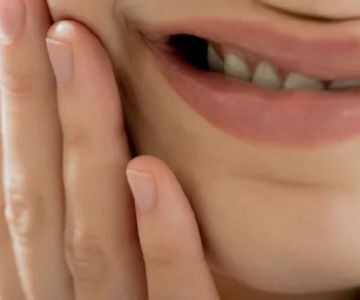The Vital Role of Dental Hygienists in Assessing Oral Diseases
Dental hygienists are frontline professionals in the battle against oral diseases. In the United States, they play a critical role in evaluating, detecting, and preventing conditions that affect teeth, gums, and overall oral health. Their expertise goes beyond routine cleaning—they are trained to recognize early signs of oral diseases, allowing for timely intervention and treatment. Understanding how hygienists assess oral diseases reveals the depth of their contribution to dental care and highlights why regular visits to dental hygienists are essential for maintaining a healthy smile.
1. Comprehensive Patient History and Risk Assessment
One of the first steps a dental hygienist takes in assessing oral diseases is gathering a detailed patient history. This includes medical background, lifestyle habits, and previous dental issues. For example, a patient with diabetes or a history of smoking may be at higher risk for gum disease. By understanding these factors, hygienists can tailor their assessments and recommendations effectively.
Risk assessment tools help hygienists identify patients more susceptible to oral health problems. They evaluate dietary habits, oral hygiene practices, and symptoms such as bleeding gums or persistent bad breath. This holistic approach ensures that no detail is overlooked, allowing for early detection and prevention.
2. Visual and Physical Examination Techniques
During the oral examination, hygienists meticulously inspect the teeth, gums, tongue, and other soft tissues. They look for visible signs such as redness, swelling, plaque buildup, tartar, and lesions that may indicate infection or disease. The use of specialized mirrors and probes aids in detecting pockets of inflammation or gum recession—early indicators of periodontal disease.
For example, probing depths greater than three millimeters around the teeth can signify gum disease progression. Hygienists also check for signs of tooth decay and wear, evaluating how these issues might impact the patient's oral health. The physical exam complements patient history, providing a clearer picture of the oral environment.
3. Diagnostic Imaging and Technology
Dental hygienists often collaborate with dentists to utilize diagnostic imaging tools such as X-rays. These images reveal hidden problems like bone loss, impacted teeth, or cavities not visible during the visual exam. Advanced technology, including intraoral cameras, allows hygienists to capture detailed photos of the mouth, enhancing patient understanding and improving documentation.
For instance, early detection of bone deterioration through X-rays can prevent severe periodontal disease. Hygienists interpret these diagnostic tools to guide patient care plans and communicate findings effectively.
Tools and Methods Enhancing Oral Disease Detection
Modern dental hygiene incorporates various tools designed to improve disease detection and patient outcomes. These advancements support hygienists in delivering precise assessments.
4. Use of Periodontal Probes and Charting
Periodontal probes are essential instruments used to measure the depth of gum pockets around teeth. Hygienists record these measurements in detailed charts, tracking changes over time. This data helps in diagnosing the severity of periodontal disease and monitoring treatment progress.
Through consistent charting, hygienists can identify trends or worsening conditions early, facilitating prompt interventions. This methodical documentation is a key component in managing chronic oral diseases.
5. Bacterial Testing and Saliva Analysis
In some practices, dental hygienists employ bacterial testing kits to identify specific pathogens linked to gum disease or oral infections. Saliva analysis can detect pH imbalances, enzyme activity, and other factors influencing oral health. These diagnostic methods provide personalized insights into a patient’s oral microbiome.
For example, detecting high levels of harmful bacteria enables targeted treatments and customized oral care routines. Such precision medicine approaches improve patient outcomes and reduce disease recurrence.
6. Patient Education and Behavior Assessment
Assessment extends beyond clinical observations to understanding patient behaviors affecting oral health. Hygienists engage patients in discussions about daily habits, diet, and oral care techniques. Education on proper brushing, flossing, and lifestyle choices empowers patients to take active roles in their oral health.
For example, a hygienist may demonstrate brushing techniques or recommend specific dental products based on the patient’s needs. Motivational interviewing helps overcome barriers like dental anxiety or lack of knowledge, fostering better compliance and long-term health.
Case Studies: Hygienists Making a Difference
Consider the case of John, a 45-year-old patient with a history of smoking and diabetes. During a routine hygiene appointment, the hygienist noted early gum inflammation and deep periodontal pockets. Thanks to early detection and coordinated care with his dentist, John received timely treatment that prevented tooth loss and improved his overall health.
In another instance, a teenage patient showed signs of enamel erosion due to frequent consumption of acidic beverages. The hygienist’s detailed assessment and education on diet and oral care led to positive lifestyle changes and halted further damage.
How Regular Visits to Dental Hygienists Protect Your Oral Health
Regular dental hygiene appointments are vital for maintaining oral health and preventing disease progression. Hygienists provide more than cleanings—they offer comprehensive assessments, detect problems early, and educate patients on maintaining a healthy mouth.
To ensure optimal care and professional guidance tailored to your needs, consider visiting Dentistry Toothtruth. Their expert hygienists and dentists work together to protect and enhance your oral health for years to come.



 Westgate Dental Arts3.0 (2 review)
Westgate Dental Arts3.0 (2 review) Coventry Family Dental4.0 (247 review)
Coventry Family Dental4.0 (247 review) Familia Dental3.0 (1028 review)
Familia Dental3.0 (1028 review) Dr. Daniel S. Fife, DDS4.0 (31 review)
Dr. Daniel S. Fife, DDS4.0 (31 review) Dentistry At Suburban Square: Michael I. Wollock, DMD4.0 (1228 review)
Dentistry At Suburban Square: Michael I. Wollock, DMD4.0 (1228 review) Comfort Care Dental4.0 (1156 review)
Comfort Care Dental4.0 (1156 review) The Importance of Oral Health Education During Pregnancy for a Healthy Pregnancy
The Importance of Oral Health Education During Pregnancy for a Healthy Pregnancy Why Skipping Dental Checkups Can Lead to Bigger Oral Health Problems
Why Skipping Dental Checkups Can Lead to Bigger Oral Health Problems Best Tips for Brushing Your Teeth Properly for Healthy Gums: Essential Techniques for Oral Health
Best Tips for Brushing Your Teeth Properly for Healthy Gums: Essential Techniques for Oral Health Advantages of Porcelain Dental Restorations
Advantages of Porcelain Dental Restorations How Can Diabetes Cause Tooth and Gum Problems? Preventing and Managing Oral Health Issues
How Can Diabetes Cause Tooth and Gum Problems? Preventing and Managing Oral Health Issues Healthy Habits for Promoting Good Oral Health and Hygiene: Tips for a Healthy Smile
Healthy Habits for Promoting Good Oral Health and Hygiene: Tips for a Healthy Smile